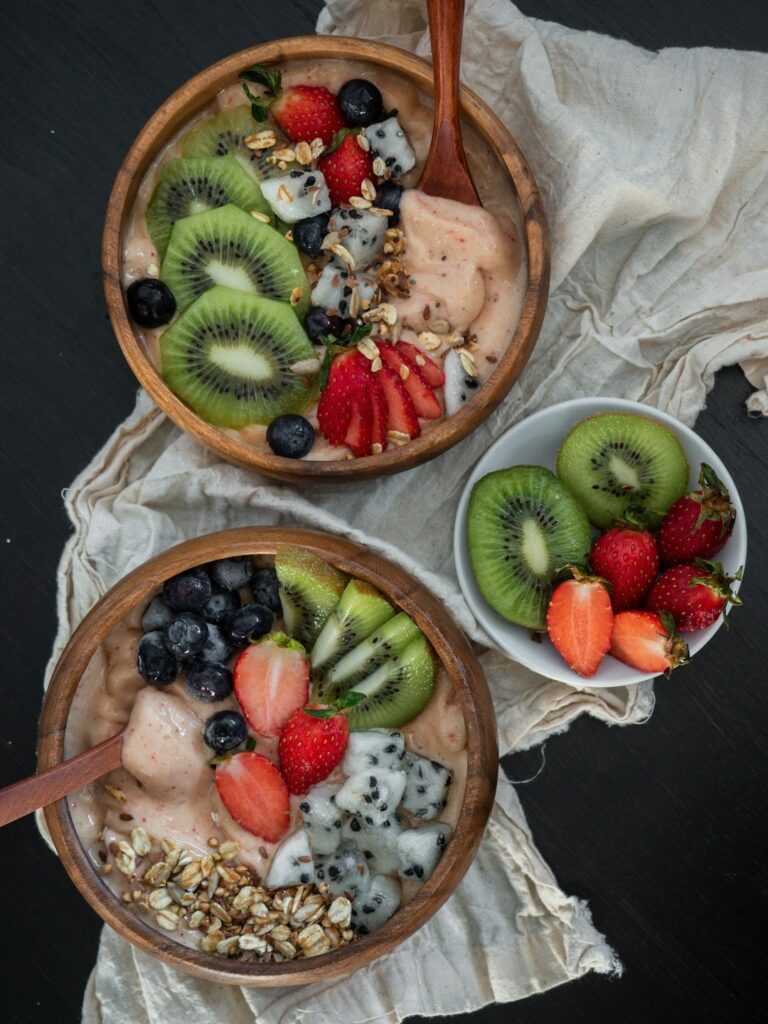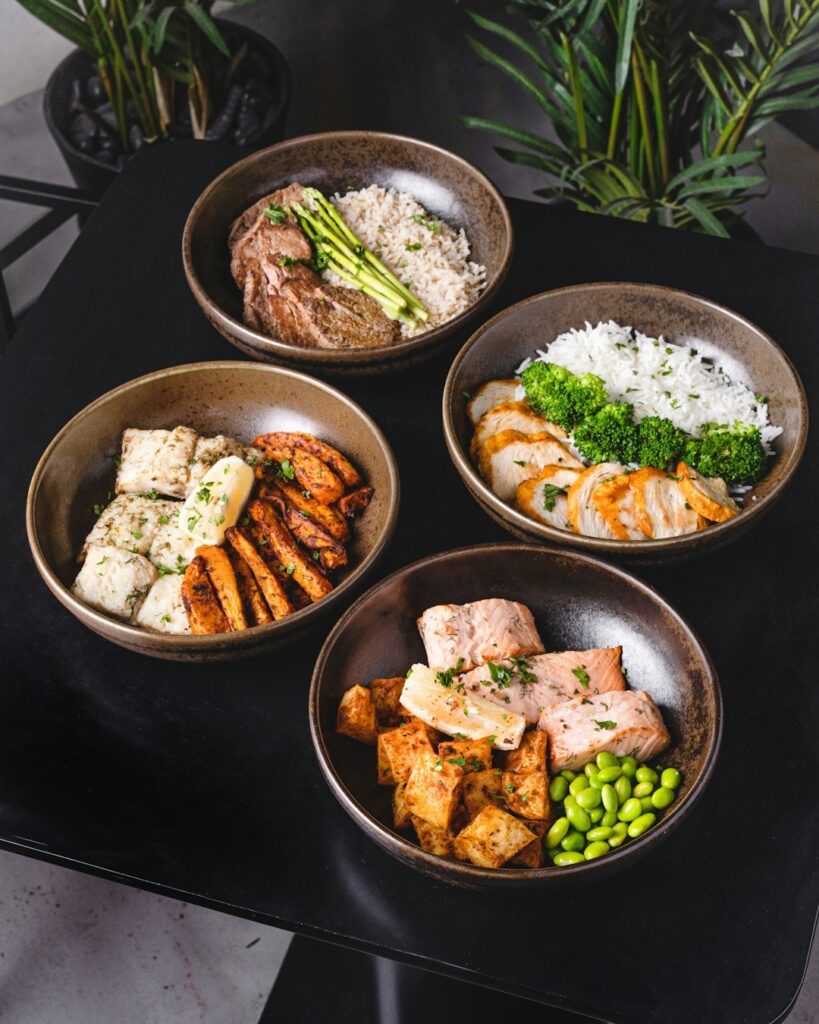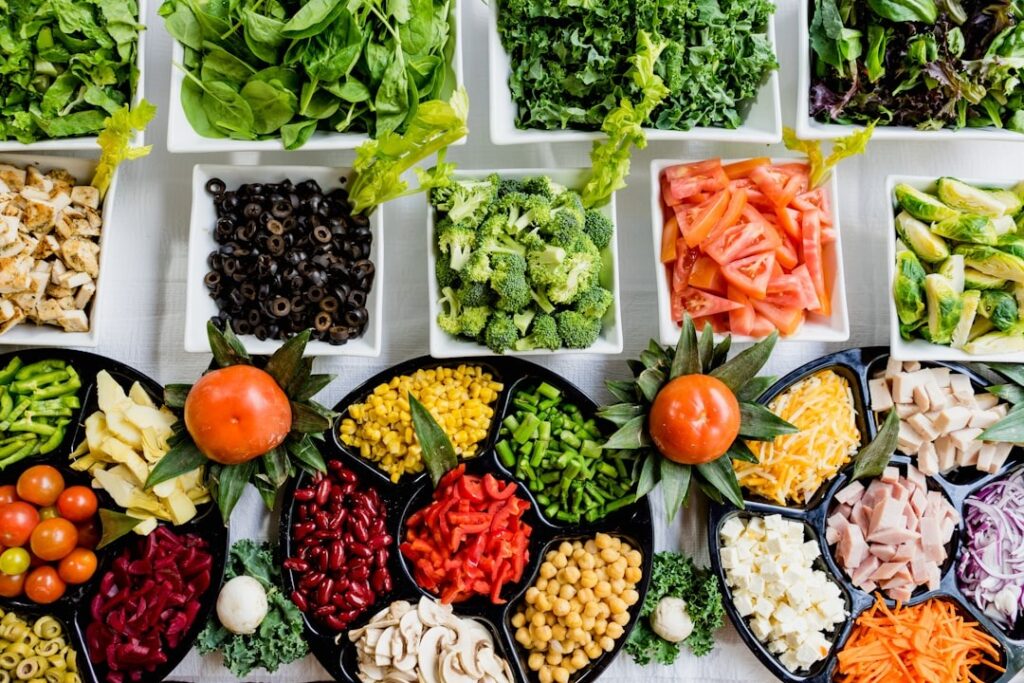How to Get Glass Skin Naturally
Cook Your Own Food

Cooking your own food will give you clarity and improve your overall health.
Knowing what you put inside of your body is key and will contribute to healthier skin, and improve your overall health.
Preparing your own food help keeps you away from harmful foods that are GMO, high in toxins, preservative, and saturated fats. These types of will destroy your gut health, inflamed your body, irritate your skin, and can keep you at the doctor office.
Once whole foods was incorporated until my diet, I began to feel great, have mass amount of energy, my acne cleared up, and I got abs.
Recommended Foods to Eat
Consume organic single-ingredient foods such as fruits, vegetables, nuts, seeds, lean meats, and seafood. These options are generally free from preservatives and consist of only one natural component. They are easy on the digestive system, simple to process, and serve as pure, natural fuel for the body.



As a wise person once told me, “You know you’re shopping well when everything in your cart comes from the perimeter of the supermarket.”
Most people find healthy diets unappealing, overly restrictive, and difficult to stick to. Trust me, I understand—I used to eat chicken, broccoli, and rice on a weekly basis when I first started this journey, and I quickly realized it wasn’t sustainable. The meals didn’t taste great, and I had no clue what other foods I could incorporate.
If you’re struggling to find delicious meals that fit your lifestyle, click here to access my recipes and meal ideas designed to help you overcome frustration and stay committed to your health journey.
Where to Find The Healthiest Foods?
When it comes to shopping for fruits, vegetables, and healthy Meats quality makes all the difference. Whether you’re looking for seasonal favorites, organic options, or specialty items, these stores are known for their exceptional produce.
- Whole Foods Market
Whole Foods is a go-to destination for organic and sustainably sourced produce. With strict quality standards, you’ll find fresh fruits and vegetables that are free from artificial preservatives or pesticides. - Trader Joe’s
Known for its affordable prices and unique offerings, Trader Joe’s consistently delivers fresh and high-quality produce. Their seasonal selections and specialty items make shopping here a fun experience. - Sprouts Farmers Market
Sprouts specializes in fresh, natural, and organic produce. Their wide variety and farmers-market feel make it an excellent choice for health-conscious shoppers. - Costco
If you’re looking to buy in bulk, Costco offers fresh produce at great prices. Their selection includes organic options and seasonal favorites, perfect for families or anyone who loves to stock up. - Local Farmers’ Markets
For the freshest, locally sourced produce, farmers’ markets are unbeatable. Supporting local growers ensures you’re getting the best seasonal fruits and vegetables while contributing to your community.
When shopping for produce, these stores and markets consistently deliver the best in quality, variety, and freshness.
Foods You Should Avoid
These foods are often processed, refined, or contain artificial ingredients that can negatively impact health over time.

| Foods to Avoid | Where its Found? | Why it’s harmful? |
| 1. Refined Sugar | White sugar, high-fructose corn syrup (HFCS), table sugar, sugary drinks, candies, pastries, and syrups | It contributes to inflammation, insulin resistance, weight gain, and can negatively affect skin health (leading to acne and premature aging) |
| 2. Refined Grains | White bread, white rice, pasta made from refined flour, baked goods made with refined white flour | They lack essential nutrients (fiber, vitamins, and minerals) and can spike blood sugar levels, contributing to weight gain and diabetes risk. |
| 3. Trans Fats (Partially Hydrogenated Oils) | Margarine, shortening, processed snack foods (chips, cookies), fast food, and packaged baked goods | Trans fats raise bad cholesterol (LDL) and lower good cholesterol (HDL), increasing the risk of heart disease, inflammation, and metabolic disorders. |
| 4. Processed Meats | Hot dogs, sausages, deli meats, bacon, and salami | Processed meats are often high in unhealthy fats, sodium, and preservatives like nitrates, which have been linked to cancer and heart disease |
| 5. Artificial Sweeteners | Aspartame, saccharin, sucralose, and acesulfame potassium found in sugar-free sodas, gum, and processed foods | These can disrupt metabolism, cause cravings for sweet foods, and may negatively affect gut health and insulin sensitivity |
| 6. Highly Processed Snack Foods | Potato chips, crackers, candy bars, pretzels, and packaged pastries | These foods are high in refined sugars, unhealthy fats, preservatives, and low in nutrients, leading to poor digestive health and increased inflammation |
| 7. Fast Food | Burgers, fries, fried chicken, pizza, and takeout meals. | Fast food is often high in trans fats, sodium, refined carbohydrates, and low in essential nutrients. It contributes to obesity, heart disease, and other chronic health issues |
| 8. Sugary Beverages | Sodas, energy drinks, sweetened iced teas, and fruit juices with added sugar. | These drinks are loaded with added sugars, which can lead to weight gain, insulin resistance, and damage to the liver and kidneys |
| 9. Artificial Food Colorings and Additives | Artificial dyes like Red 40, Yellow 5, and Blue 1 found in candies, sodas, snacks, and processed foods | These chemicals can trigger allergic reactions, disrupt metabolism, and may be linked to hyperactivity in children |
| 10. Fried Foods | French fries, fried chicken, fried snacks, and deep-fried fast food items | Fried foods contain high levels of unhealthy oils, trans fats, and acrylamide (a harmful chemical produced during high-heat cooking), all of which increase the risk of heart disease and cancer. |
| 11. Alcohol (in excess) | Beer, wine, liquor, and cocktails with added sugars | Excessive alcohol consumption leads to liver damage, dehydration, skin inflammation, and impaired nutrient absorption, which can negatively affect skin and overall health. |
If you are looking for ideas on how to get started with a healthy clean diet? Click Here to Watch a Video by “Green Healthy Cooking.”
Get High-Quality Sleep

Strive to get between 6-8 hours of sleep every night. If achieving this amount of rest is difficult, consider taking a nap during the day to help recharge your energy levels.
Based on my own experiences, I know how challenging it can be to fall asleep when you’re excited or anxious about the upcoming day.
However, neglecting your rest can result in burnout, increased irritability, and a noticeable drop in productivity. To combat this, turn off the television, place your phone out of reach, and allow yourself the restful sleep you truly deserve.
Managing Stress Effectively
We shouldn’t let things beyond our control affect our emotions. It’s common to overthink and let such issues shape our day.
To combat this, incorporate proactive habits into your routine. These practices are crucial for maintaining a long, healthy lifestyle and can be especially helpful during tough days when you don’t feel like yourself.

When you need to reset and reflect, try engaging in stress-reducing techniques. Consider doing yoga, mediation, or breath exercises. This could help with stress and introduce calmness into your life.
Maintain Hydration
One of the most effective ways to stay hydrated is by drinking natural spring water and consuming fruits and vegetables high in water content.
Now, before you start overloading your body with excessive amounts of water and trying to eat every piece of fruit you can find, simply start by having a bottle of water and some fruits and vegetables with every meal.
This should generally be sufficient. On days when you engage in physical activities, you may need to hydrate more, but your body will signal when you’re thirsty.
Fruits Packed with High Water Content
- Watermelon
- Cucumber
- Strawberries
- Cantaloupe
- Oranges
- Pineapple
- Raspberries
- Grapefruit
- Peaches
- Apples
Water-Rich Vegetables for Hydration
- Cucumber
- Lettuce
- Zucchini
- Celery
- Radishes
- Tomatoes
- Green bell peppers
- Cauliflower
- Spinach
- Broccoli
In summary
I sincerely hope you found these tips to be both useful and enlightening.
Wishing you the best of luck on your journey towards achieving a healthier, more vibrant, and energetic lifestyle.
Please consider subscribing to receive more insightful advice on how to nourish your body and transform into the best version of yourself. Looking forward to seeing you next time!